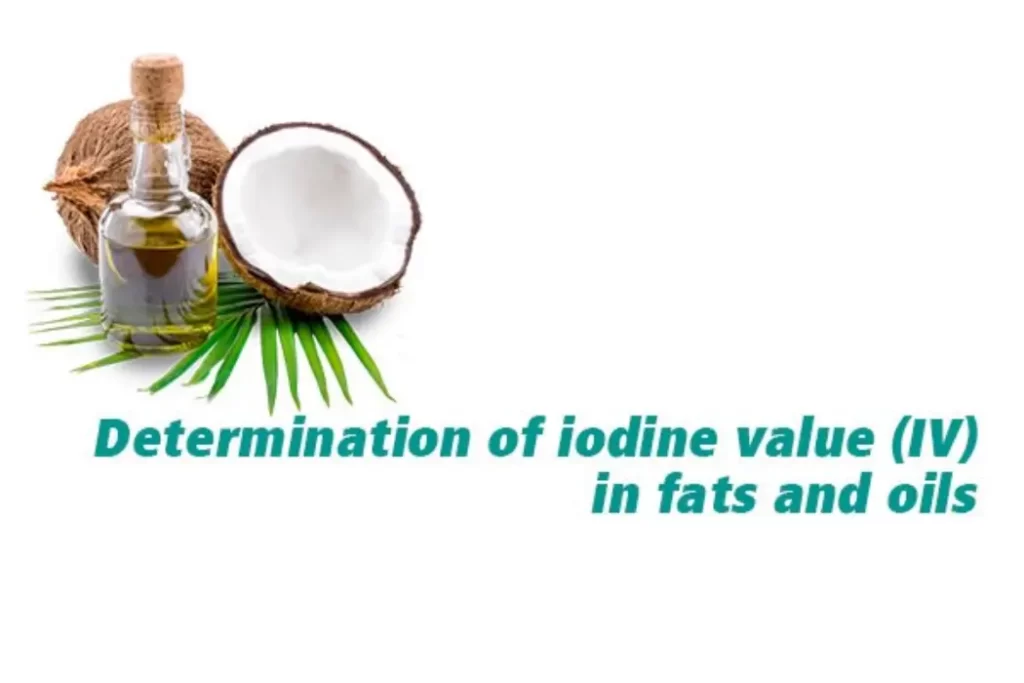In the world of oil analysis, the iodine value plays a crucial role in assessing the quality and properties of different oils. This significant parameter helps us understand the degree of unsaturation present in fats and oils, thereby providing valuable insights into their potential applications. Understanding the Iodine Value and its role in determining oil quality serves as a crucial source of knowledge to comprehend the level of unsaturation in oils and its influence on their overall quality. In this article, we will delve into the concept of iodine value and its role in determining oil quality.
Oil quality is a critical factor in various industries, including food, health, and manufacturing. The properties of oils, particularly their level of unsaturation, can significantly impact their application and usefulness. The iodine value is a fundamental analytical tool that aids in understanding the unsaturated nature of oils and fats.
The iodine value (IV) indicates the degree of unsaturation of a fat or oil. It is defined as the number of grams of iodine absorbed by 100 g of fat.
What is Iodine Value?
The iodine value, also known as the iodine number, is a measure of the number of double bonds present in the fatty acids of a given oil or fat. It is expressed in grams of iodine absorbed by 100 grams of fat or oil. The higher the iodine value, the more unsaturated the oil, indicating a higher number of double bonds.
Understanding Oil Quality
– Unsaturated Fatty Acids
Fatty acids are the building blocks of fats and oils. They can be categorized as saturated, monounsaturated, or polyunsaturated based on the presence of single, one double, or multiple double bonds between their carbon atoms, respectively. Unsaturated fatty acids, especially polyunsaturated ones, are known to have potential health benefits.
– Importance of Iodine Value in Oil Quality Assessment
The iodine value acts as a quantitative measure of the degree of unsaturation in oils. This information is vital for determining the oil’s potential stability, nutritional value, and suitability for various applications.

Iodine Value Measurement
– Iodine Number Calculation
The iodine value is determined through a chemical analysis where iodine is allowed to react with the unsaturated double bonds in the oil or fat. The amount of iodine absorbed is then measured, and the iodine value is calculated accordingly.
– Factors Affecting Iodine Value
Several factors can influence the iodine value of oils, including the type of fatty acids present, the presence of antioxidants, and the oil’s exposure to light and heat.
Different Oils and Their Iodine Values
– High Iodine Value Oils
Oils with high iodine values are rich in unsaturated fatty acids, making them suitable for certain industrial applications like in the production of paints, coatings, and biodiesel.
– Low Iodine Value Oils
On the other hand, oils with low iodine values are more saturated and have better stability, making them suitable for cooking and food preparation.
Iodine Value in Food Industry
– Rancidity Prediction
The iodine value can be used to predict the susceptibility of an oil to rancidity, which is the process of oxidation that leads to the development of off-flavors and deterioration of the oil’s quality.
– Shelf Life Determination
Knowing the iodine value allows food manufacturers to estimate the shelf life of their products, ensuring that consumers receive fresh and safe food items.
Iodine Value in Industrial Applications
– Paints and Coatings
Oils with high iodine values are often used in the production of paints and coatings due to their ability to polymerize and form a protective film.
– Biodiesel Production
In the biodiesel industry, oils with high iodine values are preferred as they tend to have better cold flow properties, making them suitable for use in colder climates.
Health Implications of Iodine Value
– Saturated vs. Unsaturated Fats
Understanding the iodine value can help consumers make healthier choices by identifying oils with higher unsaturated fat content.
– Impact on Cardiovascular Health
Oils with higher iodine values that are rich in polyunsaturated fats are believed to have positive effects on cardiovascular health when consumed in moderation.
Iodine Value and Stability
– Oxidative Stability
The iodine value is closely related to the oxidative stability of oils, which affects their resistance to rancidity and spoilage.
– Storage Considerations
Proper storage of oils is essential to maintain their quality, especially for oils with higher iodine values, which are more susceptible to oxidation.
Role of Iodine Value in Culinary Practices
Understanding the iodine value can help chefs and home cooks choose the most appropriate oil for specific cooking methods, ensuring the best flavors and textures in their dishes.
Conclusion
The iodine value is a valuable parameter in determining oil quality and suitability for various applications. From its role in predicting rancidity to its impact on health and industrial uses, the iodine value provides essential insights into the characteristics of different oils. Understanding this aspect of oil analysis can empower individuals and industries to make informed decisions about their oil usage.
FAQs
1. What is the significance of iodine value in oil analysis?
The iodine value indicates the degree of unsaturation in oils, helping assess their stability, nutritional value, and application in various industries.
2. Can high iodine value oils be harmful to health?
While oils with high iodine values can have health benefits in moderation, excessive consumption may not be ideal for certain individuals due to their higher polyunsaturated fat content.
3. How can I measure the iodine value of an oil at home?
Measuring the iodine value requires specialized chemical analysis equipment and is typically conducted in a laboratory setting.
4. Is the iodine value the only factor affecting oil stability?
No, other factors such as antioxidants, exposure to light and heat, and the type of fatty acids also play a role in determining oil stability.
5. What are the best ways to prevent oil rancidity?
Storing oils properly in a cool, dark place and avoiding exposure to air and light can help prolong their shelf life and prevent rancidity.


